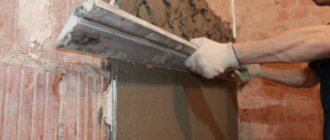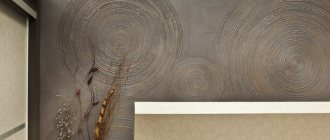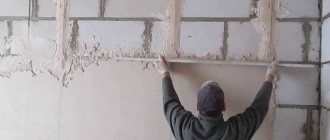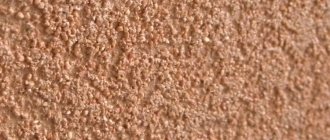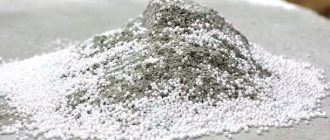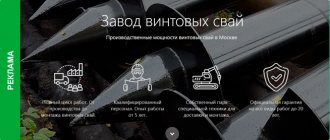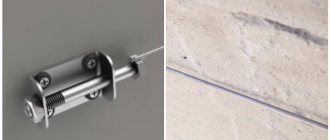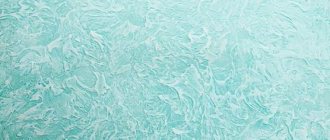The highest quality type of finishing of the surface of walls or ceilings according to the classification according to SP 71.13330.2017 “Insulating and finishing coatings” is high-quality plaster. The most stringent requirements for horizontal and vertical deviations and the number of irregularities apply to such a coating. At the same time, this type of plastering is increasingly used in modern renovations.
Types of plastering according to SNiP
Varieties of plastering are regulated by building codes and regulations 3.04.01-87 “Insulating and finishing coatings”, which regulate the preparation and direct plastering. According to these rules, today there are 3 types of plastering known, differing in quality and complexity of application:
- simple plaster;
- improved plaster;
- high quality plaster.
Each type requires the use of certain application techniques and materials. SNiP rules apply to manual and mechanized plastering. For example, the technology for performing simple plastering is carried out in 2 stages, while others require greater effort.
What plastering work is done - tools and materials
Before plastering the ceiling, you need to prepare the following tools:
- a set of spatulas of different sizes made of metal and rubber;
- construction trowel;
- brushes;
- rule;
- roller;
- sheets of sandpaper of varying degrees of grit;
- construction mixer or electric drill with an attachment;
- serpyanka;
- trowel;
- construction cord;
- lighthouse strips;
- containers for solution;
- ladder;
- protective equipment (rubber gloves, mask, respirator, goggles), etc.
In the list of materials:
- plaster (ready-made or in the form of a dry mixture);
- primer;
- putty, etc.
What is it used for?
If improved plastering is intended only to level the walls, then high-quality wall plaster is also used to prepare the base for subsequent processing. It assumes:
- Applying paint.
- Wallpapering.
- Installation of tiles.
- Applying decor, plaster, etc.
Thanks to the quality control specified in SNiP, facing work can be carried out at the highest level. You only need to take into account GOST regarding the material used. The order of operations should also be taken into account:
- the ceiling is initially processed;
- then the walls are plastered;
- the floors will be finished.
The solution is applied to the base using 2 methods: spreading and throwing.
However, the methodology for carrying out work is not the only task. You should understand which plaster will be best for walls and what SNiP requirements are for the cladding material.
Differences in quality of plaster
If we talk about SNiP for plastering walls, it is important to understand what the difference is between the finishing classes. For example, simple finishing is most often used in basements, warehouses, attics and utility rooms. Simply put, in all non-residential premises where there is no need to create a perfectly flat surface. In this case, the finishing layers are as follows:
- spray;
- 2nd layer – primer.
This allows you to hide the main irregularities without additional labor and financial costs. The maximum thickness of simple plaster walls is 12 mm.
Improved wall plaster is used in residential premises that are used by humans. It is important to make the surface smooth and beautiful, since it is constantly in sight. It is applicable for private houses, high-rise apartments, educational institutions, medical and public buildings. In this case, the coating consists of:
- spray;
- 2 layers – primer;
- 3 layers.
This way you can remove the smallest defects and irregularities, making the surface smooth and beautiful. The average total thickness of improved wall plaster is 15 mm.
High-quality surface plaster is the most technologically advanced. It is used for residential buildings, public, educational and medical buildings, as well as office premises where the requirements for plaster are increased. In cross section everything looks like this:
- spray;
- 2 layer;
- 3 layer;
- finishing layer.
The maximum layer thickness is 20 mm.
Note! Leveling the walls by applying high-quality or improved wall plaster in accordance with SNiP occurs through beacons that are installed on the wall and serve as a guide for the work as a rule.
They are fixed in advance, before work begins. Metal profiles or the solution itself can be used as beacons.
Specifics of use
When applying high-quality plaster, certain details should be taken into account:
- When the initial layer is performed using a cement material, it is recommended to do the rest using the same composition. Instead of cement, it is permissible to use only a product based on it, adding lime. Finishing work is suitable for rooms with high humidity and for building facades, since each material has moisture-resistant properties. One of the main advantages of cement plaster with various additives is its low cost. The disadvantages include the low drying speed.
- When the second and subsequent layers are made with gypsum, the spray is made with lime material. This type of finish is suitable for a dry room, as the plaster will absorb moisture. This should be considered a disadvantage. The advantage will be quick drying.
- The thickness of high-quality plaster is 2 cm. When the curvature of the building base exceeds this figure, it is permissible to increase the amount of material, however, after every 1 cm of processing, a reinforced mesh is fixed.
When and why to apply the material in a thick layer
In some cases, it is allowed to apply plaster in a thicker layer, which goes beyond the scope of building regulations. At the same time, there is a mandatory condition that is highly recommended not to be ignored. This applies to the following situations:
- too much curvature of surfaces;
- creating a right angle (90°).
In total, the entire cover can reach 8 cm. Each subsequent layer of 20 mm must be separated with a reinforcing mesh. The serpyanka is placed on a damp layer and immersed in the mixture with a spatula. Before applying the next layer, you need to wait until the composition hardens.
Each subsequent layer of 20 mm must be separated with a reinforcing mesh
What should the material look like after application?
When applying plaster, the following quality requirements must be met:
- At 4 sq. m are allowed to make only 2 errors. Differences in the building foundation cannot be more than 0.2 cm.
- The coating humidity parameters are 8%. Failure to comply with this condition leads to the growth of an aggressive biological environment such as mold and fungal microorganisms under the plaster layer. To avoid this, the building base must be thoroughly dried before applying the material.
- Possible deviations of the coating for slopes are 0.2 cm, for curved surfaces - 0.5 cm. When during the inspection it turns out that the differences exceeded the established values, the defects must be corrected.
Requirements for high quality finishing
All permissible deviations can be found in the SNiP tables. If you decide to do the work yourself, you need to adhere to these standards. After finishing with plaster, a surface of 4 sq.m. should not have more than 2 uneven outlines, which, moreover, should not be more than 2 millimeters.
But deviations of the slopes of doors and windows, respectively, in the horizontal and vertical directions, are allowed only 1 millimeter. Deviations of curved parts should not exceed 5 millimeters. In this case, experts advise beginners to use templates.
When plastering, the moisture content of the substrates should be approximately 8%. Of course, this is difficult to determine. However, with high humidity, wet spots appear on brick or concrete walls, and mold is sometimes visible. In this case, the base should be allowed to dry thoroughly.
After all the work has been completed, it is necessary to check its quality. To do this, inspect the entire treated surface. According to the requirements, it must be even and smooth, without any damage or marks from tools.
Plaster layer parameters
The following requirements apply to layers of such plastering:
- the thickness of the initial concrete and brick layers is 0.5 cm, the wooden layer is 0.9 cm along with reinforcement;
- the largest dimensions of soil from a cement-based product are 0.5 cm, from gypsum - 0.7 cm;
- the thickness of the cover is 0.5 cm;
- parameters of the decorative coating – 0.5 cm.
Upon completion of the work, you will need to ensure the quality of the work. For these purposes, the treated wall is inspected. There should be no unevenness or visible flaws in the coating.
Thickness of decorative plaster
Decorative mixtures also have their own minimum and maximum values. This plaster is divided into several types:
- textured;
- structural;
- Venetian;
- pebble.
The thickness of the pebble surface depends on the size of the grains
Structural decorative plaster
Venetian has the lowest plaster layer values.
For a textured cover, the “dimensions” of the cover reach 50 mm
Venetian has the lowest plaster layer values. This is explained by the fine fraction of the component (stone flour). The same applies to Moroccan and silk decorative mixtures.
For textured and pebble finishes, the “dimensions” of the cover reach 50 mm. This is an imitation of brick laying, the type of wood, and sea waves. The thickness of the pebble surface depends on the size of the grains.
For any experienced craftsman, compliance with the thickness of the plaster coating is a prerequisite. Following the requirements of the standards is not due to any whim, but to the need to create a high-quality and durable coating.
Did you learn something new? Share in the comments!
Characteristics of the mortar mixture
Quality requirements during plastering for the finished product:
- All layers of plaster are applied using a solution of appropriate consistency. For spraying and soil, after mixing the product, the material should be filtered through a metal sieve. Cell parameters are 0.3 cm. If covering is performed, the solution is passed through a metal sieve with cell parameters of 1.5 mm.
- The mobility of the material is within the range of 0.5-1.2 cm. This figure is not allowed to be exceeded.
- Another important parameter will be moisture retention. This parameter is 90%.
- Requirements are also placed on the size of sand grains when a product based on cement and sand is used. For layers 2 and 3, the fraction parameters will be 2.5 mm, for layers 1 – 1.5 mm.
- When plastering is done using a finished product, it is necessary to familiarize yourself with the expiration dates of the product. It is recommended to buy material that was manufactured shortly before facing work.
High-quality plaster is the standard for leveling walls, so lime mixture is rarely used for work; it is replaced with dry solutions made from polymer additives.
A little about layers of plaster
Before describing the types of plaster based on quality, it is important to consider everything about the finishing layers. This information will be needed to understand the whole essence of the topic. What does the finish consist of?
- First of all, the base is sprayed or prepared for further layers. For this, a solution of liquid consistency is used. It provides reliable adhesion (adhesion) of the surface to the plaster. In addition, the mixture gives the surface the ability to repel moisture. Recommended layer thickness is 3–5 mm.
- The second stage, according to SNiP, begins with the application of primer. What is its purpose? It levels the main plane of the surface. When performing work, a solution of dough-like consistency is used. The thickness of this layer is 7–8 mm.
- The next layer is the covering. It is used to smooth out small defects and smooth out the coating. This uses a mixture that has the consistency of sour cream. The recommended thickness of such a layer is around 2–5 mm. Based on the requirements of GOST 8736–93, the fraction of sand particles should not exceed 1.2 mm.
Important! Another important point specified in SNiP is that when the total thickness of the improved wall plaster exceeds 20 mm, the base must be pre-reinforced. A polymer or metal reinforcing mesh is suitable for this work.
Now let's talk about how the 3 types of finishes differ, based on the layers of the finished mixture.
Application stages
To implement high-quality plaster, you will need to place emphasis on each stage of finishing work. Before applying the material, the coating must be properly prepared.
Surface preparation
Sequence of actions when preparing the building foundation:
- The old covering is dismantled: the paint or wallpaper is removed, the tiles are knocked off, the whitewash is washed off.
- The base is cleaned of dust and dirt: initially, go over the coating using an industrial vacuum cleaner or brush, then rinse with a damp cloth or sponge.
- Grease stains are removed using degreasers.
- The gaps are filled with a solution, first the flaws are treated with a primer.
- The coating is primed in 2 layers with an interval for drying.
- Guides for the rule are installed.
Splash
For brick or concrete walls, the mortar is applied at a height of 5 cm, and for wooden surfaces - 9 cm. Wooden walls are finished only with shingles or using a special mesh. Spraying is carried out using a solution whose consistency resembles sour cream. Before work, the coating is cleaned, defects are filled using a mixture of cement and sand. Spraying will make it possible to increase the adhesion of the plaster layers to each other. When a similar procedure is carried out on a concrete wall, the coating is treated with concrete contact in advance.
Padding
To create high-quality plaster, apply a primer in several layers. Priming makes it possible to increase the level of adhesion and fully level the wall. The thickness of 1 layer cannot exceed 0.5 cm. For a mixture of gypsum or lime, a thickness of 0.7 cm is acceptable. Before applying the next layer, you must wait until the previous one has completely dried. In addition, you will need to level each layer.
Experts can carry out alignment without pre-installing beacons, but beginners must use them.
Cover layer
With such plastering, the covering will be the final stage. To apply the final layer, you can use a decorative solution. The thickness of the last layer will not exceed 0.2 cm. The coating is applied to the primer almost immediately, until it has completely dried. Dry soil is moistened with water in advance using a sprinkler or a damp broom.
Introduction
High-quality plaster is intended for leveling the surface for further high-quality painting or wallpapering.
Plastering work is one of the most important technological processes in construction production,
the technical level of which largely determines the quality and durability of buildings and structures. Plaster
performed with various mortars thrown onto the surface followed by compaction and treatment of the front layer, it is called monolithic. It is used for finishing inside buildings and on facades. Monolithic plasters are divided according to their purpose: ordinary, special and decorative
Ordinary plaster is divided into three types based on quality: simple, improved and high-quality. High-quality plaster is performed only on beacons.
.The main importance of finishing work is due to the fact that their result directly determines how a building or room will look and what impression it will make.
The finishing work depends on the type and properties of the materials used.
Work quality control
To check the quality of wall plaster, it is recommended to use the following methods:
- The 2-meter level is pressed against the wall, the device is held in a vertical position. Every 2 m of the base is inspected. If deviations of more than 0.1 cm are detected, the defects are corrected.
- Take a construction square with an arm length of approximately 0.5 m. The device is pressed against the corner and guided from bottom to top. Defects are corrected if any are identified.
- The parallelism of the walls is checked using a tape measure. The distance between the bases at the end and start points is measured. If the parameters match, the finishing was carried out correctly.
- The quality control of the slopes is checked using an industrial level. For these purposes, the tool is applied to the base. The vertical and horizontal slopes allow deviations of 0.1 cm, and the width - 0.2 cm. When the parameters are higher, the defects are corrected.
Taking into account GOST standards for plastering walls, it is possible to carry out high-quality plaster, due to which all further work is carried out without much difficulty. This simplifies the task and also extends the life of the finish. Having knowledge of the technology for performing high-quality plaster, it is quite possible to carry out the finishing work yourself, without resorting to the help of professionals. This will provide an opportunity to learn new skills and save money on specialist services.
Technological sequence for performing high-quality plaster
1. Surface preparation
- This is the very first operation. We sample the seams, then use a metal brush to clean the surface and wet it with water so that the plaster adheres well to the surface.
2. Hanging -
performed using a plumb line, level rule. A nail is driven into the corner of the wall at a distance of 30-40 cm from the ceiling and the wall. The nail should protrude from the wall to the thickness of the future plaster layer. A thread of a plumb line is attached to the nail so that the plumb line, without shaking the floor, does not reach it by 10-15 cm. This is how nails are driven every 1 m along the length of the surface.
Thus, we get a row of nails, the heads of which are located strictly on the same line.
3.
Arrangement of marks and beacons
to obtain an even and
quality surface. Before starting work, make marks and beacons from the solution. Using a plaster spatula, apply gypsum mortar in the form of a tubercle around the nail. After the solution has set, using a cutter we cut off the tubercles upwards, and then the sides and get marks. We set mortar beacons by brand using the rule. You can place metal beacons
Metal beacons
Metal beacons can have different dimensions. In stores there are 3, 6 and 10 mm beacons. Small variants of 3 mm are less common. More common are 6 and 10 mm beacons. The size of the beacons, first of all, depends on the thickness of the plaster layer, as well as the degree of curvature of the surface.
You can adjust metal beacons yourself using metal cutting scissors. We select beacons according to the suspended surface.
4. Spray application.
We take a ladle or plaster spatula in our hands, go to the box with the mortar, take the mortar and throw the mortar onto the surface with a sharp movement of the hand.
5.
Application of primer.
We take the rule in both hands, put it against the wall and insert it upward, cutting off the excess mortar until it fits tightly to the surface. You can level the soil with a trowel, lifting it from below in a zigzag motion.
6. Leveling.
We take a trowel in our hands, place it on the surface and begin to level it from bottom to top. from left to right until a smooth surface is obtained.
7. Applying the second layer of primer.
We take a ladle or plaster spatula in our hands, go to the box with the mortar, take the mortar and throw it on the surface.
8. Leveling.
We take a trowel in our hands, place it on the surface and begin to level it from bottom to top. from left to right until a smooth surface is obtained
9. Applying the cover.
We take a plaster spatula in our hands, take a solution of fine sand from the box and spread it onto the surface in a thin layer.
10. Leveling the cover.
We take the rule in our hands, put it against the wall, and move it up, cutting off the excess mortar until it fits snugly to the surface
11. Grout.
We take a grater in our hands, place it on the surface, and begin to rub it in a counterclockwise circular motion until a smooth surface is obtained.
12. Smoothing.
To obtain a perfectly smooth surface, we perform repeated smoothing, no later than 24 hours after the mortar mixture has set, and not immediately after the first smoothing. Before the second smoothing, moisten the surface generously with water. After smoothing and drying, the surface becomes glossy
13. Checking the quality of plaster.
Plastered surfaces must be flat, smooth, with clear edges of corners and intersecting lines. We check the quality of the plastered surface using a rule, plumb line, level
Purpose of high quality plaster
High-quality wall plaster is performed to prepare surfaces for decoration: for wallpapering, painting, tiling or applying other decorative materials. Thanks to this, the finish acquires visual appeal and lasts for a long period.
Articles on the topic
Waterproofing a brick plinth - horizontal, vertical, instructions, advice from masons
Repair of the basement of a brick house - major, partial, instructions, advice from masons
Shrinkage of a brick house - why it happens, consequences, instructions, advice from masons
Electrical wiring diagram in a brick house - how to do the wiring, instructions, advice from masons
Brick partitions - preparation, construction, instructions, advice from masons
How to plaster a brick base of a house - stages of work, instructions, advice from masons
Preparing a brick surface for plastering - rules, instructions, advice from masons
Installing a bathtub on bricks - what materials are used, instructions, advice from masons
Reviews ()
Advantages and disadvantages of facade plaster for exterior use
Any finishing material should be considered comprehensively, because it can have both pros and cons. Plaster for finishing facades has a large number of positive qualities, so today it is considered the most popular in comparison with other materials.
Plaster will not only decorate the facade externally, but also create reliable protection
The main advantages include:
- Protecting walls from moisture. When the plaster dries, it stops coming into contact with water. It is not destroyed by either rain or snow.
- Resistance to temperature changes. The material is not afraid of either heat or extreme cold, and is also resistant to significant temperature changes throughout the year.
- The ability to apply the mixture to any surface, including wood and insulation, which makes it universal and indispensable.
- High resistance to mechanical stress. Dried plaster is a hard shell.
- High adhesion to the base of the walls. The liquid coating penetrates into small surface cracks and crevices for unsurpassed durability.
- After hardening, the composition becomes safe for humans and does not emit harmful substances.
- Vapor permeability ensures the walls breathe and comfortable living in the house.
- Additionally, a layer of plaster creates protection from sound waves, as well as from cold.
- The material washes well and does not absorb dirt.
- It is easy to use and has a large number of colors and textures, as a result of which everyone can create their own style in the design of the building.
The color range of the material is varied
Plaster for finishing building facades is divided into several types, and each of them, unfortunately, has minor drawbacks. These include:
- Some types of material still become dirty, which is especially visible on light and dark backgrounds. For cleaning, use water without detergents; dirt comes off easily.
- Mineral plaster has a limited color palette. In order to diversify it, you will have to apply a special paint on top of the layer.
- Some types of material are expensive.
Exterior decoration will decorate even an old house
Obviously, this finishing material has no obvious disadvantages. It's time to talk in detail about its types.
Types and features of decorative plaster for exterior use
The material is divided into several types depending on its composition, each of which has its own characteristics. In order to choose the right composition for a particular object, you should carefully read the characteristics of the species.
Any store will offer the buyer a wide selection of products
The main types widely represented on the modern building materials market:
- acrylic;
- silicate;
- silicone;
- mineral.
Since they all differ from each other in composition, technical characteristics and a number of properties, each of them should be described separately.
Acrylic plaster for exterior use
The composition of the decorative material for finishing the walls of buildings includes a binder. In the case of this type of plaster, acrylic resins are used.
Facade plaster based on acrylic after drying
Due to the fact that the composition is based on liquid resin, this type of material is sold ready-made in buckets. After opening, it can be immediately applied to the surface. The layer of plaster will set in just two hours. Main characteristics:
- impact resistance;
- vapor permeability;
- plastic;
- resistance even to aggressive environments.
Due to these qualities, acrylic coating is also used to strengthen the surface of walls.
This is what acrylic resin looks like when dry.
It additionally contains additives that prevent the spread of bacteria; it also releases excess moisture, and at the same time the wall breathes well.
Silicate facade plaster
In this case, potassium liquid glass is used as a binder. It has neutral electrostaticity, which allows it to repel contaminants. Silicate plaster does not get dirty and breathes well.
Finishing element decorated with silicate plaster
Most often, this type of material is a substitute for acrylic finishing in cases where the latter cannot be used. The optimal temperature for work ranges from +5 to +25°C with a humidity of no more than 70%.
Silicone plaster for facade
Silicone-based plaster is considered one of the most expensive. This material is very expensive, but has many advantages:
- wide range of colors;
- Dirt is easily washed off with water;
- elasticity.
In addition, it allows steam to pass through, which means the walls breathe. Its only significant disadvantage is its high cost.
Wall finishing with Renotex silicone plaster
Mineral plaster for facades
The basis of this product is cement. It is he who has unprecedented strength. If you are interested in quality such as durability, feel free to choose this type of material. The product is presented on the market in the form of a powder mixture; it must be diluted with water in a certain proportion. This type of exterior plaster serves the home for more than 10 years, almost does not absorb moisture, and is not afraid of microorganisms and fungi.
Knauf cement-based products
As a rule, the use of this type of material will oblige the owner to additionally purchase frost-resistant facade paint for exterior work. The fact is that the color scheme of such finishing mixtures leaves much to be desired due to its composition. For this, only silicate paint is used, because the other will not allow the plaster to breathe. Next, we will look at how to make the right choice and what to consider when choosing this product.
Decorative plaster for interior wall decoration. This article will discuss the types of wall plaster, the tools necessary for its application, and the technology for applying the coating.
Some features of plastering other ceilings
When plastering, the characteristics of the materials are taken into account. Treatment of ceilings made of wood, plasterboard, and insulation is in demand.
Plastering wooden ceilings
Wooden ceilings are being prepared for plastering. You will need to fill 2 layers of shingles or fix a reinforced steel mesh with cells measuring 10x10 cm. Without preparation, the plaster coating will crack and remain unstable on the wood. Each layer of solution is dried. The materials are applied in stages, then leveled with a spatula.
How to plaster a plasterboard ceiling with your own hands
Before plastering the plasterboard ceiling, the seams are covered with sickle tape, and the surface is leveled with a primer. Carefully handle the heads of screws, nails and other metal fasteners that may appear after painting or gluing wallpaper. The layer of plaster coating should be no more than 15 mm.
Plaster on ceiling insulation
Plastering on ceiling insulation is carried out in 2 stages. First, the base is primed. A liquid plaster solution is applied on top, onto which a painting mesh is fixed and pressed into the composition. The mesh sheets are overlapped. The first coating is dried, then the next layer of a denser solution is applied. The material is leveled using the rule and rubbed after drying.
Layer thickness depending on surface curvature
The size of the plaster also depends on the curvature of the building base. For large differences, you will have to apply a large amount of solution to level the surface. However, there is another way. In order not to apply a large amount of solution, the differences are cut off with a grinder. Only after this the base is treated with a solution. This helps reduce product consumption and reduce layer thickness. If the surface was initially relatively flat, then a minimum layer of material of 5-10 mm is applied.
How best to level a ceiling with plaster
Ceiling leveling technologies differ depending on the quality of the surfaces:
- smooth, without defects;
- with differences in height, roughness, bulges or depressions.
Relatively flat ceilings
Smooth surfaces can be prepared for plastering without the use of beacons. The coating is carried out in 2-3 layers. Some areas can be treated with more leveling solution. The final layer should be of uniform density.
When applying plaster with a thickness of more than 1 cm, reinforcement is required. Fiberglass or metal mesh is fixed to the ceiling before plastering and covered with plaster.
How to plaster ceilings with large irregularities
When processing ceilings with uneven surfaces greater than 2 cm, it is necessary to install beacons. The plaster material is applied in a dense layer that protrudes above the beacon strips. Then the mass is leveled over the surface using a rule. Finally, the material on the ceiling is sanded.
